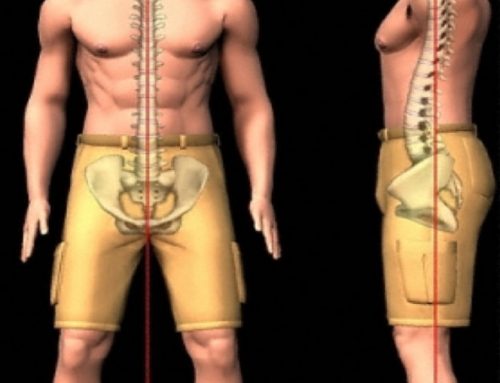Your Cervical Spine

Did you know that neck pain is a leading cause of disability worldwide? What’s more is that the shape and posture of your Cervical spine is directly related to your neck health and function. Taking care of or avoiding Cervical spine problems requires understanding, maintaining, and restoring healthy Cervical spine alignment. A healthy Cervical spine allows for healthy neck movement and the health of your:
- Other spinal regions;
- Blood flow in your neck;
- Blood flow to your brain;
- Nerves and spinal cord;
- Discs;
- Muscles, tendons, and ligaments;
- Bones and joints;
- Balance;
- And more.
The message here is that your Cervical spinal alignment matters.
What should my Cervical spine look like?
From front-to-back, your Cervical spine should be straight up and down. This helps to provide strong structural support for the body. From the side, your Cervical spine should have a curvature that curves towards your front. The curve is a near-circular shape and when you think of curves, think of shock absorption. Too much, too little, or reversal of your Cervical curve has a negative impact on its ability to absorb shock. Your Cervical spine’s ability to absorb shock protects your bones, joints, ligaments, muscles, tendons, discs, nerves, and spinal cord.
How do I know what my Cervical spine looks like?
Do you have a current x-ray of your Cervical spine?
If you answered, “No,” then you do not know what your Cervical spine looks like. But don’t feel bad. You can always have a properly trained doctor take x-rays of your Cervical spine and analyze them for you. Did you know there are doctors, physical therapists, trainers and others who think they can predict Cervical spine alignment from posture? Unfortunately, using your outer posture to predict your internal Cervical spine alignment is guessing. It is irresponsible and dangerous to gamble with your neck health by guessing.
If you answered, “Yes.” then you may know what your Cervical spine looks like. Several factors affect Cervical spine x-rays. Body positioning, proper x-ray analysis, and a thorough understanding of spinal alignment can mean the difference between a proper and improper understanding of your Cervical spine. These factors depend on the person taking and analyzing your x-ray. “Practice without knowledge is dangerous.”
What if I have unhealthy Cervical spine alignment?
You are definitely going to want to do something about that. Did you know that unhealthy Cervical spine alignment is associated with:
- Neck pain;
- Cervical spine instability;
- Unhealthy movement and balance;
- Trigger points;
- Myofascial Pain Syndrome;
- Fibromyalgia;
- Pain, dysfunction, and disability;
- Disc bulges, herniations, and degeneration;
- Cervical spondylolisthesis;
- Cervical radiculopathy;
- Mid-back, low back, and pelvis problems;
- Spinal deformities;
- Spinal arthritis;
- Spinal canal stenosis;
- Poor quality of life;
- Headaches;
- Dizziness;
- And more.
Cervical Spine, Neck Pain, and Disability: A Closer Look
By now, you know that neck pain is a leading cause of disability worldwide. Neck pain has a significant impact on:
- Personal care (washing, dressing, etc.);
- Lifting;
- Reading;
- Headaches;
- Concentration;
- Work and employment activities;
- Traveling;
- Sleeping;
- Recreational activities;
- And more.
Healthy Cervical spine alignment and posture is essential for preventing, reducing, or eliminating disability due to neck pain. Your Cervical spine should have a curvature that curves towards your front for the purposes of shock absorption. Too much or too little cuve does not allow the cervical spine to absorb shock. Instead, weight and stress push down into the spine causing instability, compression, and degeneration. This has a harmful effect on the muscles, ligaments, bones, tendons, discs, nerves, and spinal cord of your neck. And you can be left with pain that alters your movements, mobility, function, and quality of life.
High quality research shows that improvement of the Cervical spine curvature and forward head posture posture using Chiropractic BioPhysics® corrective spinal rehab gives rise to significant improvement in neck pain and, as a result, improvements in neck movement, mobility, and functional ability. What’s more is that these studies include long-term follow-ups that show continued significant neck movement, mobility, and functional ability improvements for years after Cervical spine alignment and posture are improved. In other words, Chiropractic BioPhysics® can be a long-term solution for your potential long-term neck pain and disability.
Cervical Spine and Headaches: A Closer Look
Did you know that certain headaches come from your neck? They are called cervicogenic headaches. Cervicogenic literally means produced by the neck; cervico- means neck and -genic means produced by. Abnormal Cervical spine alignment and posture has a negative impact on neck movement, shock absorption, and spine stability leading to degeneration of the Cervical spine. Neck muscles have to continuously work harder to move and stabilize the head and neck which increases tension and stress on the head and neck. And, as these neck muscles work harder for longer periods of time, they become weaker which requires them to work even harder. It should come as no surprise that abnormal Cervical spine alignment and posture has been linked to cervicogenic headaches.
High quality research shows that improvement of the Cervical spine curvature and forward head posture posture using Chiropractic BioPhysics® corrective spinal rehab results in significant improvement in neck movement, and cervicogenic headache pain, frequency, disability, and impact on daily life. Long-term follow-ups in these studies show that when Cervical spine alignment and posture are improved in people with cervicogenic headaches, they can expect continued significant health improvements for years after they are done with treatments.
Cervical Spine and Dizziness: A Closer Look
Did you know that dizziness can be the result of problems in your neck? This condition is called cervicogenic dizziness. Cervicogenic literally means produced by the neck; cervico- means neck and -genic means produced by. Abnormal Cervical spine alignment and posture has a negative impact on neck movement, shock absorption, and spine stability leading to degeneration of the Cervical spine. As the Cervical spine degenerates, the muscles, ligaments, bones, tendons, discs, nerves, and spinal cord of the neck experience increased stress and strain. Muscles, ligaments, and tendons of the neck also attach to the skull; stress and strain on these tissues can impact the skull and head. Cervical spine nerves branch from the spinal cord which extends from the brain; stress and strain on these tissues can impact the brain and other nerves. It should come as no surprise that abnormal Cervical spine alignment and posture has been linked to cervicogenic dizziness.
High quality research shows that improvement of the Cervical spine curvature and forward head posture posture using Chiropractic BioPhysics® corrective spinal rehab results in significant improvement in neck movement, cervicogenic dizziness severity, frequency, disability, and impact on daily life, neck pain, and head stability. Long-term follow-ups show that when Cervical spine alignment and posture are improved in people with cervicogenic dizziness, they were able to experience continued significant health improvements even one year after they are done with treatments. In the same study, patients who received physical therapy without Cervical spine correction methods saw any improvements experienced during treatments regress back to baseline at follow-up exams after treatments stopped. In other words, if you are experiencing dizziness, have a Chiropractic BioPhysics® trained chiropractor examine your Cervical spine.
Cervical Spine and Balance: A Closer Look
The spinal cord and nerves in your neck have a major influence on the brain’s understanding of your body’s positioning and its ability to maintain a stable, upright posture. Your Cervical spine alignment and posture affects neck movement, shock absorption, and stability of the Cervical spine. Abnormal Cervical alignment and posture leads to spine degeneration, where the muscles, ligaments, bones, tendons, discs, nerves, and spinal cord of the neck experience increased stress and strain. Cervical spine muscles, ligaments, tendons, and discs provide essential feedback to the brain for the body for balance and a stable, upright posture. Cervical spine nerves branch from the spinal cord which extends from the brain; stress and strain on these tissues can impact the brain and other nerves that control balance and the brain’s awareness of the body’s positioning. It should come as no surprise that abnormal Cervical spine alignment and posture have been linked to balance.
High quality research shows that improvement of the Cervical spine curvature and forward head posture posture using Chiropractic BioPhysics® corrective spinal rehab results in significant improvement in head and neck movement, balance, head stability, and visual tracking, and neck pain and disability. Long-term follow-ups show that when Cervical spine alignment and posture are improved in people with balance problems, they were able to experience continued significant improvements even one year after they are done with treatments. In the same study, patients who received physical therapy without Cervical spine correction methods saw any improvements experienced during treatments regress back to baseline at follow-up exams after treatments stopped. In other words, if you are experiencing balance issues, have a Chiropractic BioPhysics® trained chiropractor examine your Cervical spine.
What causes unhealthy Cervical spine alignment?
“If only the human body could handle trauma as well as biotechnology stocks do.” Major and minor traumas throughout a person’s life accumulate and contribute to spinal misalignments, deformities, and the ultimate health problems that result. Major traumas include:
- Motor vehicle crashes and whiplash;
- Unintentional slips and falls (involving bicycles, stairs, trampolines, trees, etc);
- Sports injuries;
- Birth trauma;
- Violence;
- And more.
Minor traumas involve everyday unhealthy stresses caused by:
- Poor posture during activities;
- Unhealthy spinal alignment;
- Unhealthy ergonomics at work and home;
How can I correct my Cervical spine without surgery?
Chiropractic BioPhysics® (CBP®) involves conservative, non-surgical, corrective chiropractic spinal care. CBP® doctors properly take and analyze Cervical spine x-rays to identify Cervical spine alignment problems and determine the appropriate treatment. CBP® doctors apply specific corrective adjustments, spinal traction, and spinal exercises to provide healthy movement, positioning, and stability to the spine. But don’t just take our word for it.
Is there research on Cervical spine correction?
Many doctors, healthcare providers, and products claim to be able to correct Cervical spine alignment. An essential part in choosing the right treatment for your spinal problem involves knowing what treatments have been successful. CBP® has the most scientific research available involving conservative, non-surgical, corrective chiropractic spinal care. In several high-level studies, hundreds of participants and patients have undergone CBP® Cervical corrective chiropractic care showing improvements in pain, function, disability, and quality of life as a result of Cervical spinal correction. This body of evidence includes high-level research including randomized and non-randomized clinical trials, multiple treatment groups, and control groups, published in peer-reviewed journals, and indexed in PubMed of the National Institute of Health. What’s more, is these studies show long-term health improvements where participants and patients who underwent CBP® corrective chiropractic care were able to maintain their health improvements at 1, 2, and 3 years following treatment protocols where no further treatment was administered. Unfortunately, participants and patients who underwent traditional physical therapy, chiropractic, or no treatment protocols saw a return to their original pain, dysfunction, disability, and poor health and quality of life. The message here is that your doctor matters.
How can I find a CBP® doctor?
You can find the locations and contact information for CBP® doctors at the CBP® Doctors Directory. The CBP® Doctors Directory includes and identifies doctors who have received CBP® training, earned Basic and Advanced Certifications, and those who have achieved Instructor level. Fully equipped and trained CBP® offices are exceptional and may see patients that travel from out of state or country to help with Cervical spine problems.
Contact Dr. Matt Locke today to learn more about your Cervical spine and keeping it healthy.















